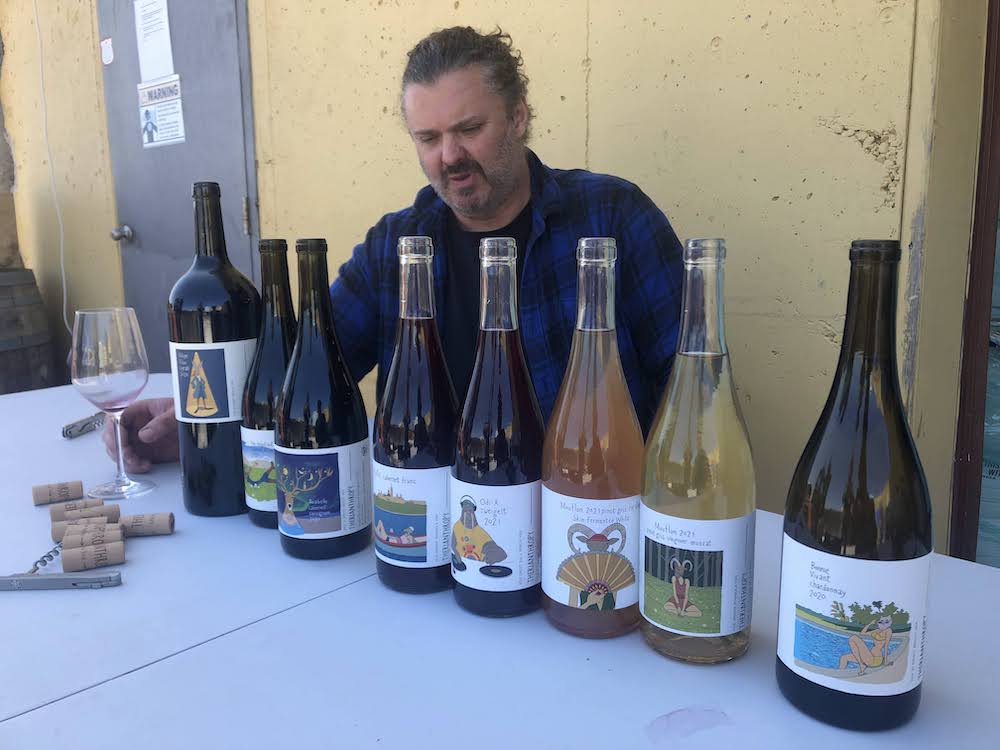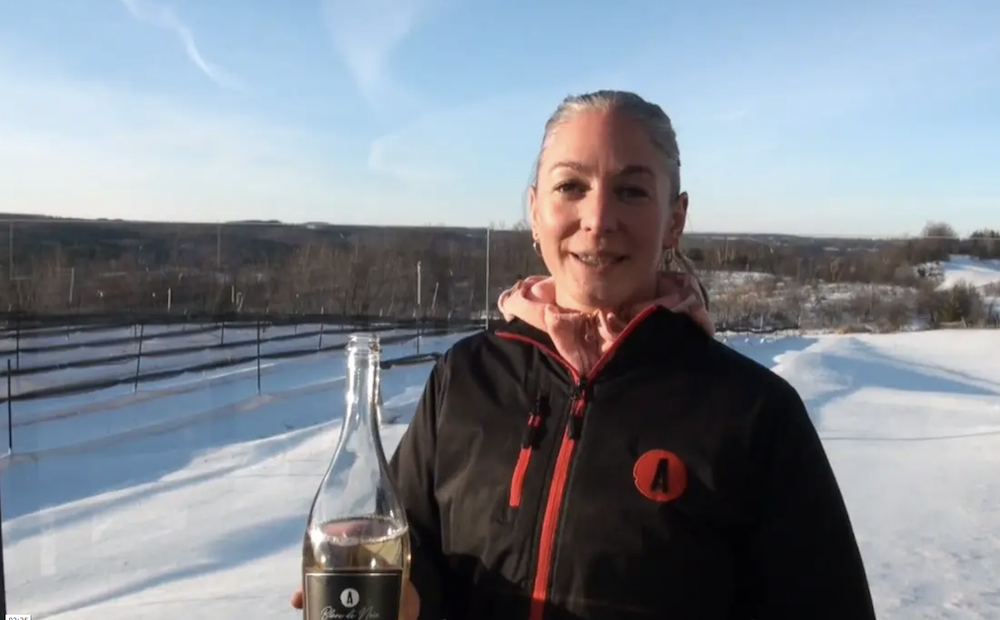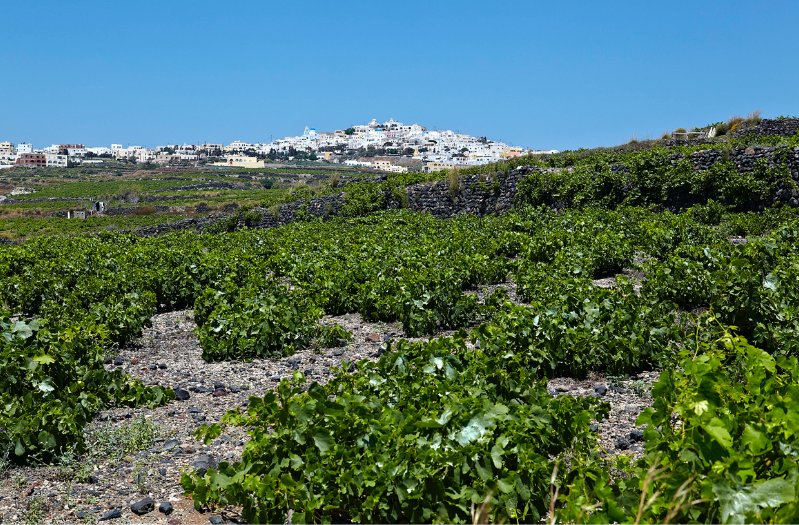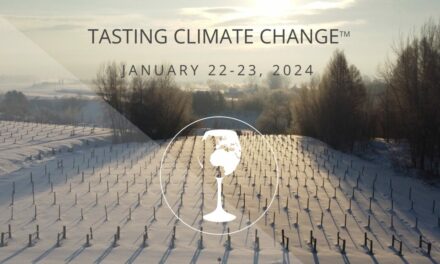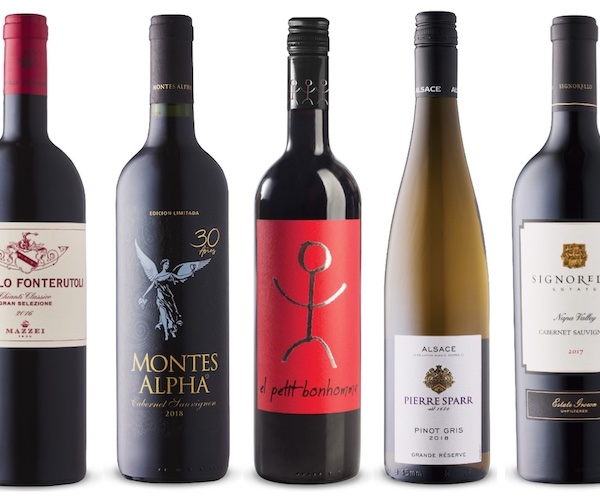A couple of weeks ago I took a rather pleasant drive out to the beautifully bucolic small town of Creemore to meet up with winemaker David Eiberg of Therianthropy infamy. This was to be my first in-person tasting/interview in over two years, and mercifully it didn’t disappoint. Far from it…
The Therianthropy project is the brainchild of a few friends who wanted to harness the very best Ontario fruit to make unique, artisanal, site-specific, low-intervention/natural wines. With David heading up their production, they get everything so very right, where so many in Ontario following the natural route get it so, often painfully, wrong.
It’s by no means a one-man-shown; the day I visited, the partners (and their attendant families) were all working on the bottling/labelling/packing line, making it quite the family affair.
After an exhaustive tasting of their line up I concluded that Therianthropy are crafting some of the most fascinatingly sui generis Ontario wines I have tasted in recent memory.
One of my issues with lesser examples of natural wine is the manner in which the dogma so often gets in the way of wine that is true to its place of origin; the winemaking, or lack of it, masks any particular sense of place. That is certainly not the case here, as Eiberg has crafted a range of wines with such defined and individual personalities, each speaking to their individual fruit sources with a laser-guided focus, and achieving this takes more than a modicum of skill. Let’s just say that Eiberg has got in going on when in comes to crafting these bloody excellent terroir-driven bottlings of distinction.
Look out for a video interview with David Eiberg in the coming weeks.
Therianthropy wines are available through their website, but please note that all are small, limited releases.
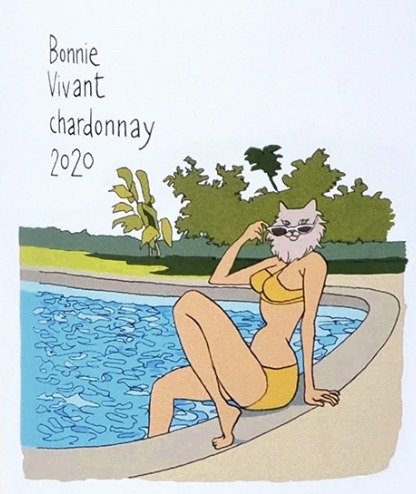
2020 Bonnie Vivant Chardonnay, St. David’s Bench VQA, Ontario, Canada (Alcohol 13%, Residual Sugar 1.4 g/l)
With fruit hailing from the Tavistock red/Toledo loamy/Toledo phase clay soils of the Bock vineyard, St. David’s Bench, with grapes harvested at 23.1 Brix.
I found the nose quite reserved at first, but it slowly opened with time: pineapples, peaches, and beeswax. Texturally the Bonnie Vivant is a dream: soft, creamy, weighty, and mouthfilling with bountiful yellow plums and apricots.
This is undeniably a ripe glass of Chardonnay, but there’s a lovely thread of minerality that runs its course through to a delightfully persistent chalk-like finish.
![]()
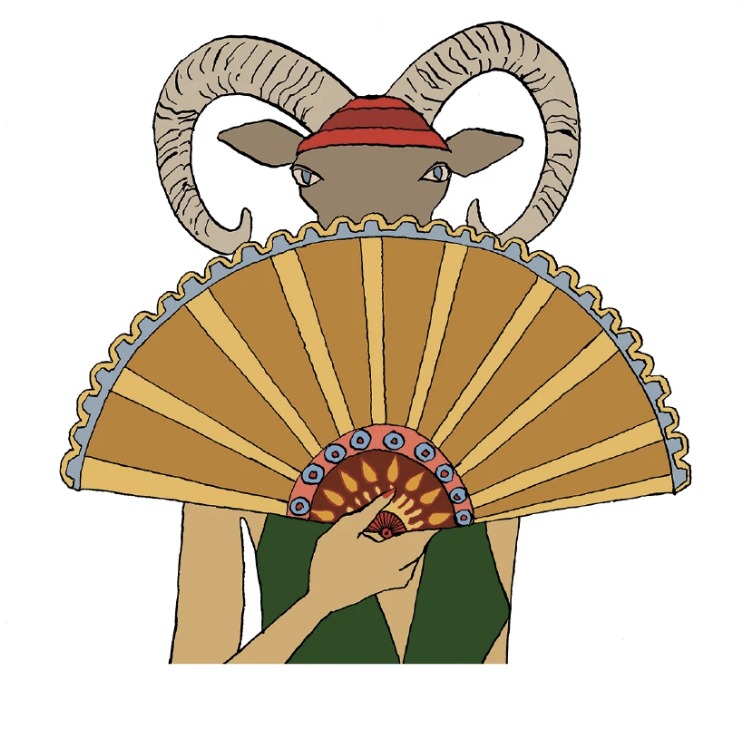
2021 Mouflon Pinot Gris/Riesling, Lincoln Lakeshore VQA, Ontario, Canada (Alcohol 11%, Residual Sugar 0.9 g/l)
With Riesling from the Grimsby Hillside vineyard and Pinot Gris from the Redfoot vineyard, the fruit was co-fermented whole-cluster in concrete eggs, with a four day cold soak before a 19 day/one month primary/malolactic ferment.
The nose gives orange/ginger marmalade and a touch of fragrant red clover. The palate is mouthwatering persimmon, kumquat, and spice. Lovely structure here with a delicate tannic element. Try with spicy food.
![]()
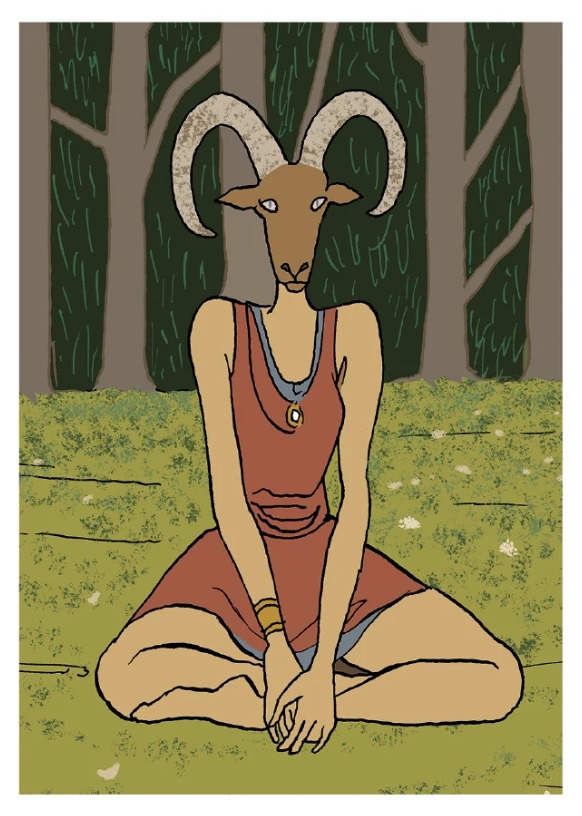
2021 Mouflon Viognier/Pinot Gris/Muscat, Niagara Peninsula VQA, Ontario, Canada (Alcohol 11.5%, Residual Sugar 0.9 g/l)
This Pinot Gris (50%) is sourced from the Grimsby Hillside vineyard, Lincoln Lakeshore, and the Viognier (31%) /Muscat (19%) from the Bock vineyard, St. David’s Bench.
The Pinot Gris went straight to press, the Viognier and Muscat being whole-cluster co-fermented in concrete egg with a three day cold soak, giving a softer approach to skin-contact wine.
Aromatics of apricot, magnolia, and mandarins abound, with that little bit of Muscat certainly letting its presence be known. The palate has a gorgeous floral leaning but with decidedly structured and savoury leanings. A delightful gateway drug to the world of orange wines.
![]()
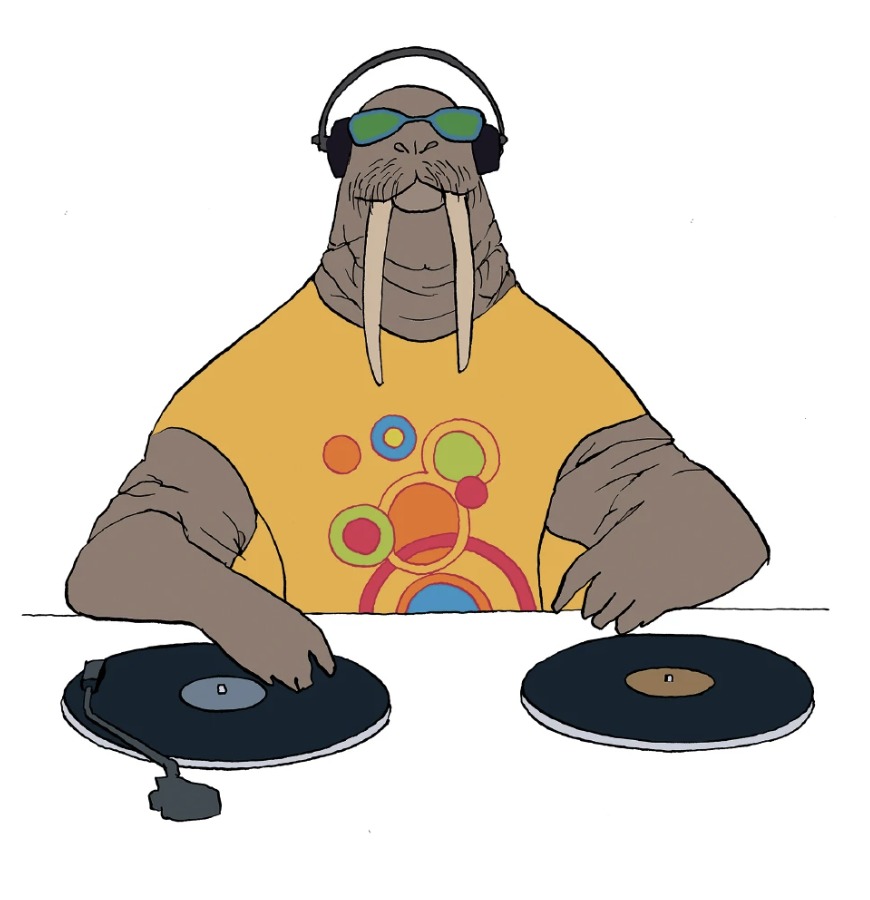
2021 Odi-X Zweigelt, Shorthills Bench VQA, Ontario, Canada (Alcohol 10.5%, Residual Sugar 1.4 g/l)
Sourced from the clay loam soils of the Glenview vineyard on the Short Hills Bench, this is a vibrant unoaked example of Zweigelt with terrific crunchy, snappy, and juicy red berry fruit cracking open all over the nose and palate, with hints of white pepper.
I’ve always had a soft-spot for Zweigelt like this, and it has been a while since I have had one, especially from Ontario. I just adore all the beautiful clean, pure Zweigelt fruit.
A wholly crushable bottle of wine, especially when served chilled and with good friends who know the score.
![]()


2021 Le Maillot Cabernet Franc, Niagara Peninsula VQA, Ontario, Canada (Alcohol 12.5%, Residual Sugar 1.1 g/l)
I’ll admit that sipping on this wine I was transported to riverbanks of Anjou. Such is its resemblance to the wines of said AOP, I was quite astonished. This is simply one of the most delightful expressions of Ontario Cabernet Franc I have come across. The nose is pretty and floral, with lovely ripe Cab Franc aromatics. The palate is frisky, elegant, and so fresh. Winemaker Eiberg certainly has a deft touch with these lighter red styles. Superb.
![]()
2020 The Negotiant Cabernet Franc, Lincoln Lakeshore VQA, Ontario, Canada (Alcohol 13.3%, Residual Sugar 0.1 g/l)
If the Maillot was a whimsical Cab Franc, this one is a little more serious. The fruit comes exclusively from Lincoln Lakeshore’s Redfoot vineyard, with 75% whole cluster and a six day cold soak, bringing out some enchanting complexities in the glass.
Like all of Eiberg’s wines, there’s a glorious purity of fruit, but this one is truly spectacular, with a layered bouquet of bing cherries, violets, berry compôte, and complex spices. The palate is all about dark berry fruit, with some lovely supple tannins providing that structural balance.
![]() Outstanding.
Outstanding.
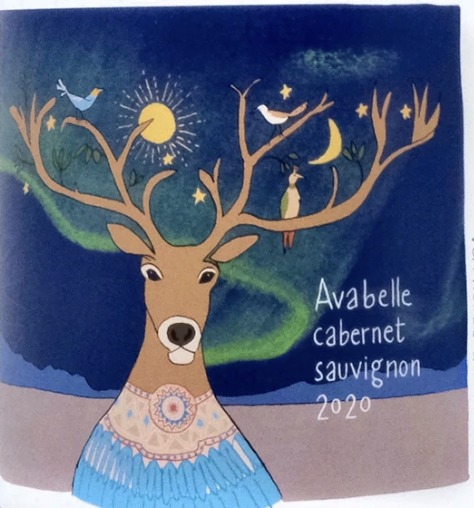
2020 Avabelle Cabernet Sauvignon, St. David’s Bench VQA, Ontario, Canada (Alcohol 12.7%, Residual Sugar 0.2 g/l)
It had been quite some time since I had been this impressed by an Ontario CS. With fruit from the Bock vineyard, located in one of the only two sub-appellations that can actually ripen Cab Sauvignon successfully consistently, this wine did a fair bit of shapeshifting over the four days I was tasting it.
This wine is an astonishing expression of Ontario Cabernet Sauvignon Vinification as follows: 20% whole cluster, five day cold soak, with both ferment and elevage taking place in concrete (who needs oak?). The resultant wine is a restrained and reserved take on the grape, but at the same time utterly thrilling. Think of pure red/black berry fruit, black olives, cocoa powder, graphite, bright acidity and utterly delectable silky tannins.
![]()
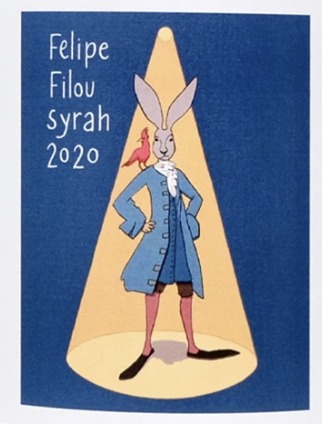
2020 Felipe Filou Syrah, St. David’s Bench, Ontario, Canada (Alcohol 13%, Residual Sugar 1.2 g/l)
Therianthropy created so little of this particular wine that they chose to bottle it exclusively in magnums, and I don’t think I have ever tasted anything local quite like it.
Sourced once again from Eiberg’s favoured Bock vineyard, I was both shocked and delighted to recognise its remarkable resemblance to the red wines of the northern Rhône. I never thought I’d see an Ontario Syrah that excited me to this degree; and it only got better and better over time.
The wine was 60% whole cluster, with five days of cold soak to extract all of those wondrous Syrah phenolics. Aged in neutral oak, there is simply nothing to distract one from the top notch Syrah fruit… and 14% Viognier.
Ticking all the right boxes for benchmark cool climate Syrah, one will find black berry fruit, spicy smoked meat, floral elements, and that elusive rotundone cracked pepper element. Supple and silky tannins. Lovely.
![]()

